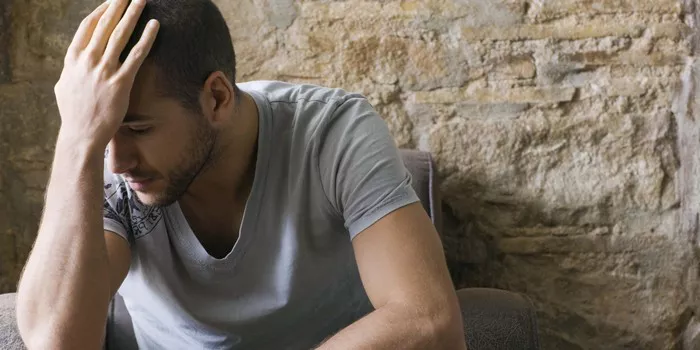Left lower pelvic pain in males can be a complex issue, encompassing a variety of potential causes and symptoms. Understanding the underlying factors is crucial for effective diagnosis and treatment. This article will explore the various causes of left lower pelvic pain, the symptoms associated with these conditions, and the available treatment options.
1. Understanding Left Lower Pelvic Pain
Pelvic pain refers to discomfort located in the lower abdomen, specifically below the navel and above the thighs. In males, this type of pain can arise from numerous anatomical structures including the urinary tract, reproductive organs, gastrointestinal tract, and musculoskeletal system.
2. Common Causes of Left Lower Pelvic Pain
The causes of left lower pelvic pain can be categorized into several groups:
Urinary Tract Issues
Urinary Tract Infection (UTI): UTIs are bacterial infections that can lead to inflammation and pain in the pelvic region. Symptoms often include painful urination, frequent urination, and lower abdominal discomfort.
Kidney Stones: Stones that form in the kidney can cause severe pain as they pass through the ureter. This pain often radiates from the back to the lower abdomen and groin.
Prostatitis: Inflammation of the prostate gland can lead to chronic pelvic pain syndrome (CPPS), which may manifest as persistent discomfort in the pelvic area.
Gastrointestinal Issues
Diverticulitis: This condition involves inflammation or infection of small pouches that can form in the colon, leading to left-sided abdominal pain, fever, and changes in bowel habits.
Irritable Bowel Syndrome (IBS): IBS can cause cramping and abdominal discomfort that may be localized to one side of the abdomen.
Constipation: Severe constipation can lead to cramping and pain in the lower abdomen.
Reproductive System Conditions
Hernia: An inguinal hernia occurs when tissue protrudes through a weak spot in the abdominal muscles, often causing localized pain that may worsen with activity.
Testicular Torsion: This is a medical emergency where the spermatic cord becomes twisted, cutting off blood supply to the testicle. It presents with severe scrotal pain that may radiate to the abdomen.
Sexually Transmitted Infections (STIs): Conditions such as chlamydia or gonorrhea can cause pelvic pain along with other symptoms like discharge or painful urination.
Musculoskeletal Issues
Pelvic Floor Dysfunction: Tightness or dysfunction in pelvic floor muscles can lead to chronic pelvic pain without any identifiable cause.
3. Symptoms Associated with Left Lower Pelvic Pain
Symptoms accompanying left lower pelvic pain vary depending on the underlying cause but may include:
Sharp or dull aching sensation
Pain during urination or ejaculation
Changes in bowel habits (diarrhea or constipation)
Nausea or vomiting
Fever or chills
Swelling or tenderness in the abdomen
See also: What Is Chronic Male Pelvic Pain: Causes, Symptoms & Treatment
4. Diagnosis of Left Lower Pelvic Pain
Diagnosing the cause of left lower pelvic pain typically involves a comprehensive approach:
Medical History and Physical Examination
A thorough medical history will help identify any previous health issues, lifestyle factors, or recent activities that may contribute to symptoms. A physical examination often includes palpation of the abdomen and pelvis to assess tenderness and swelling.
Diagnostic Tests
Urinalysis: To check for signs of infection.
Blood Tests: To assess for infection or inflammation markers.
Imaging Studies: Ultrasound or CT scans may be employed to visualize internal structures and identify abnormalities such as hernias or diverticulitis.
5. Treatment Options for Left Lower Pelvic Pain
Treatment for left lower pelvic pain depends on its underlying cause:
Medications
Antibiotics: For bacterial infections such as UTIs or STIs.
Anti-inflammatory Drugs: Nonsteroidal anti-inflammatory drugs (NSAIDs) can help alleviate pain and reduce inflammation.
Muscle Relaxants: These may be prescribed for pelvic floor dysfunction.
Lifestyle Modifications
Adopting certain lifestyle changes can also aid in managing symptoms:
Increased fluid intake to prevent dehydration and assist kidney function.
Dietary adjustments to manage IBS or constipation.
Regular exercise to improve overall health and reduce stress on pelvic muscles.
Physical Therapy
Pelvic floor therapy may be beneficial for individuals experiencing chronic pelvic pain due to muscle tension or dysfunction.
Surgical Interventions
In cases where conservative treatments fail, surgical options may be necessary:
Hernia repair for inguinal hernias.
Surgical intervention for kidney stones if they are too large to pass naturally.
Laparoscopic surgery for diverticulitis if complications arise.
6. When to Seek Medical Attention
It is crucial for individuals experiencing persistent or severe left lower pelvic pain to seek medical attention promptly, especially if accompanied by:
Sudden onset of severe pain
Fever or chills
Vomiting
Blood in urine or stool
Unexplained weight loss
Conclusion
Left lower pelvic pain in males is a multifaceted issue that requires careful evaluation and treatment tailored to its underlying cause. Understanding potential causes—ranging from urinary tract issues to gastrointestinal disorders—can aid both patients and healthcare providers in effectively addressing this common yet complex symptomatology.By recognizing symptoms early and seeking appropriate medical care, individuals can manage their condition effectively, leading to improved quality of life and overall health outcomes.
Related Topics:


